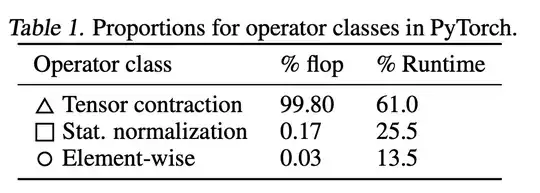In section 3.2.1 of Attention Is All You Need the claim is made that:
Dot-product attention is identical to our algorithm, except for the scaling factor of $\frac{1}{\sqrt{d_k}}$. Additive attention computes the compatibility function using a feed-forward network with a single hidden layer. While the two are similar in theoretical complexity, dot-product attention is much faster and more space-efficient in practice, since it can be implemented using highly optimized matrix multiplication code.
It does not make sense why dot product attention would be faster. Additive attention is nearly identical computation wise; the main difference is $Q + K$ instead of $Q K^T$ in dot product attention. $Q K^T$ requires at least as many addition operations as $Q + K$, so how can it possibly be faster?
